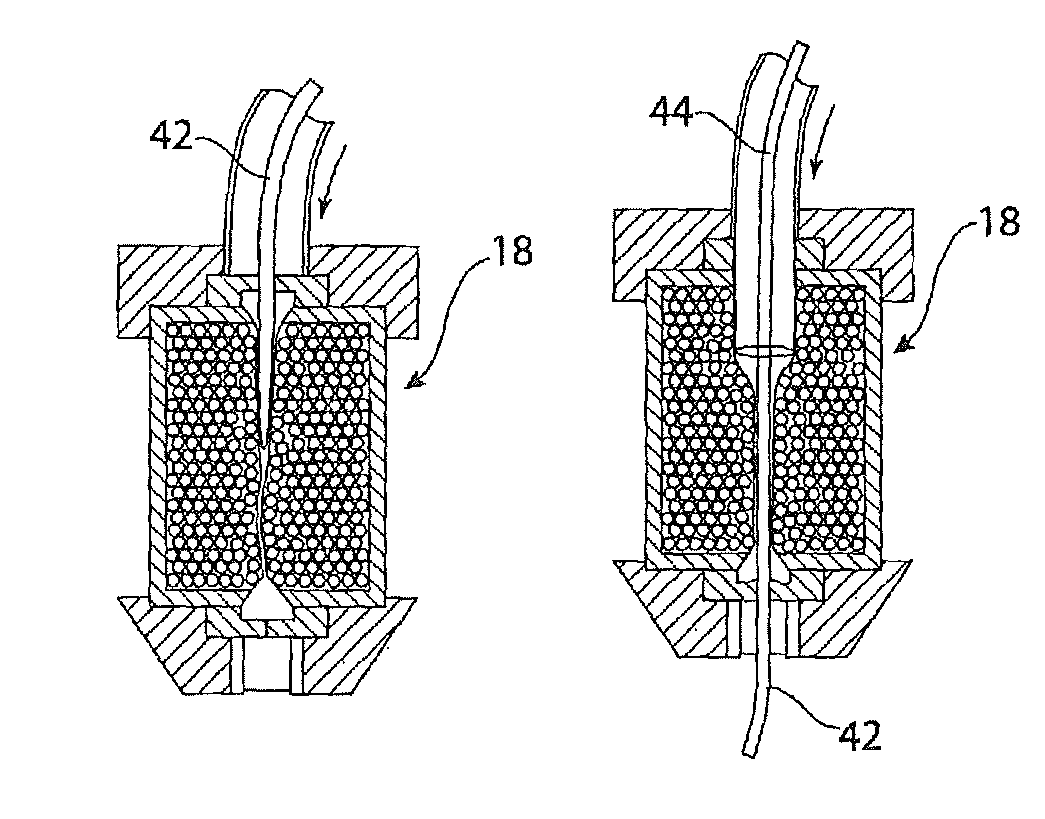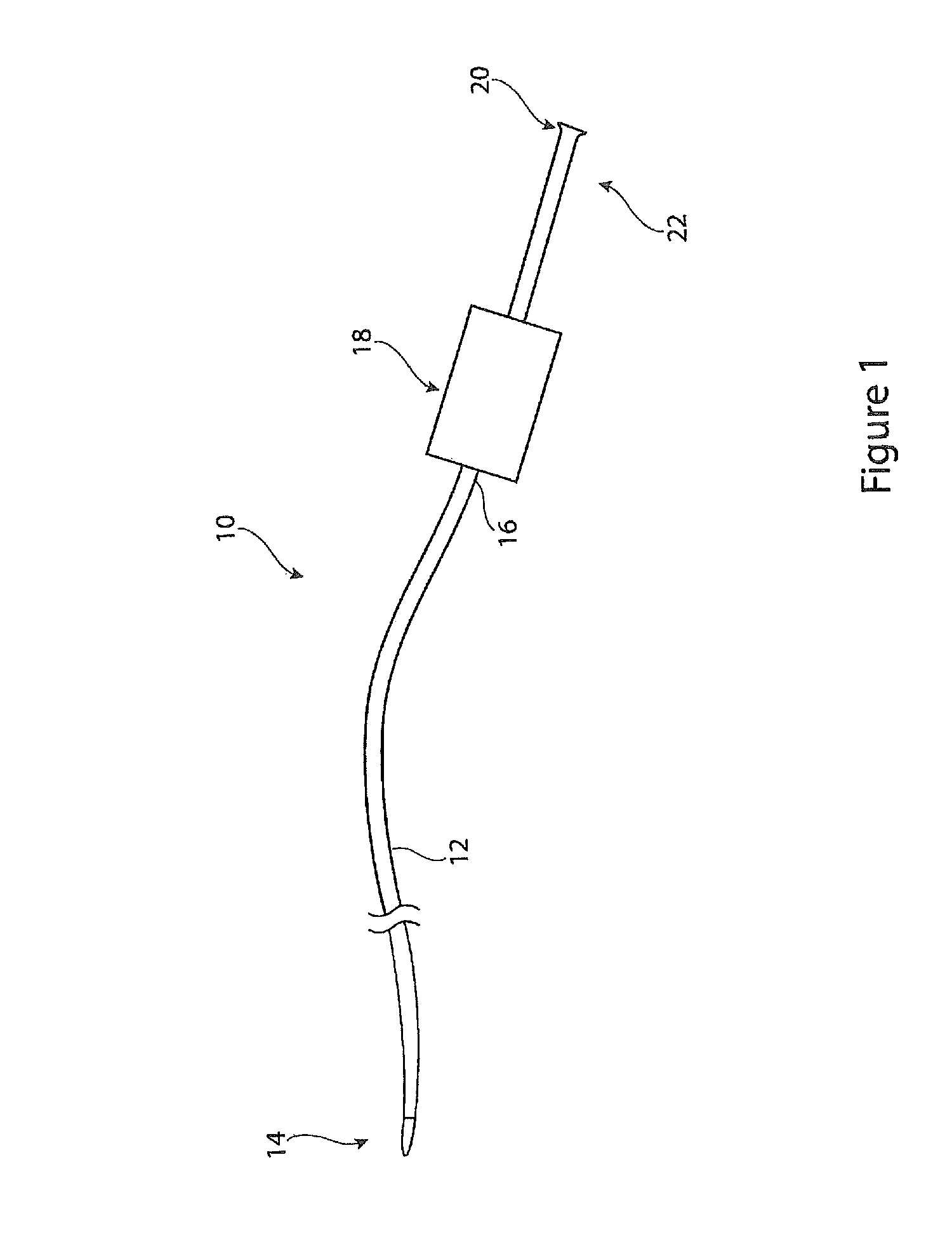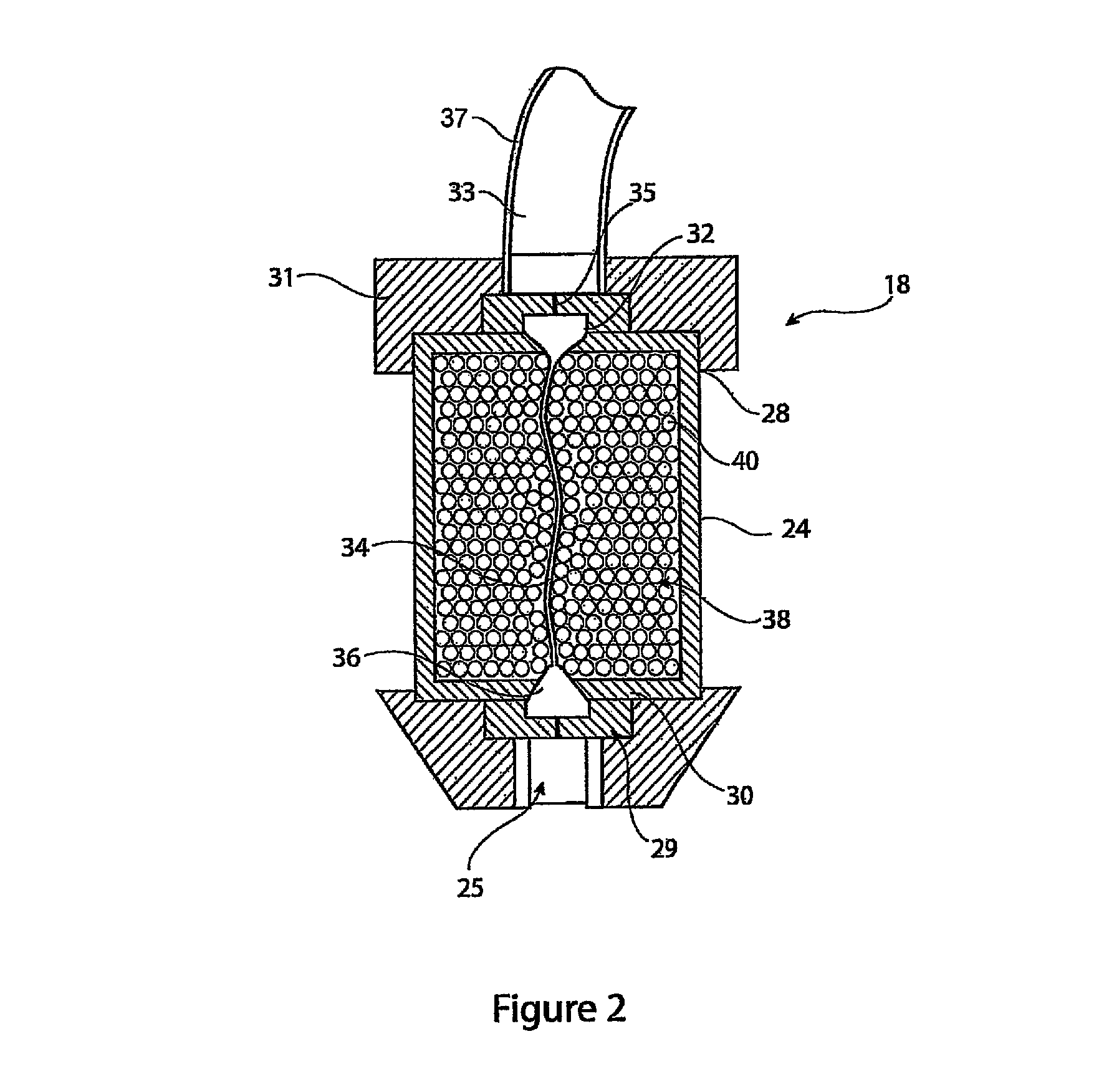Haemostatic valve assembly
a technology of haemostatic valve and assembly, which is applied in the direction of valves, intravenous devices, medical devices, etc., can solve the problems of valves failing to provide seals, etc., and achieve the smoothest movement and sliding, the effect of increasing the efficiency and sealing characteristics of the valve, and extending the sealing function
- Summary
- Abstract
- Description
- Claims
- Application Information
AI Technical Summary
Benefits of technology
Problems solved by technology
Method used
Image
Examples
Embodiment Construction
[0023]Referring to FIG. 1 there is shown an example of introducer assembly 10, having a general form which is conventional in the art but which is provided with a haemostatic assembly as taught herein. The introducer assembly 10 may be used for the endoluminal implantation in a patient of medical devices such as stents, stent grafts, vena cava filters, occluders and other such devices. The introducer 10 may also be used for the deployment of any other medical treatment and / or diagnostic tools.
[0024]The introducer assembly 10 includes, as it typical, a sheath 12 designed to be fed through the vasculature of a patient. The sheath 12 has a distal end 14 which in use is positioned at the treatment site, and a proximal end 16 coupled to a haemostatic valve assembly 18 and which remains outside the patient during the procedure. A cannula or catheter element 20 extends from the haemostatic valve assembly 18 at a proximal end 22 of the introducer 10. The sheath 12, cannula 20 and haemostati...
PUM
 Login to View More
Login to View More Abstract
Description
Claims
Application Information
 Login to View More
Login to View More - R&D
- Intellectual Property
- Life Sciences
- Materials
- Tech Scout
- Unparalleled Data Quality
- Higher Quality Content
- 60% Fewer Hallucinations
Browse by: Latest US Patents, China's latest patents, Technical Efficacy Thesaurus, Application Domain, Technology Topic, Popular Technical Reports.
© 2025 PatSnap. All rights reserved.Legal|Privacy policy|Modern Slavery Act Transparency Statement|Sitemap|About US| Contact US: help@patsnap.com



